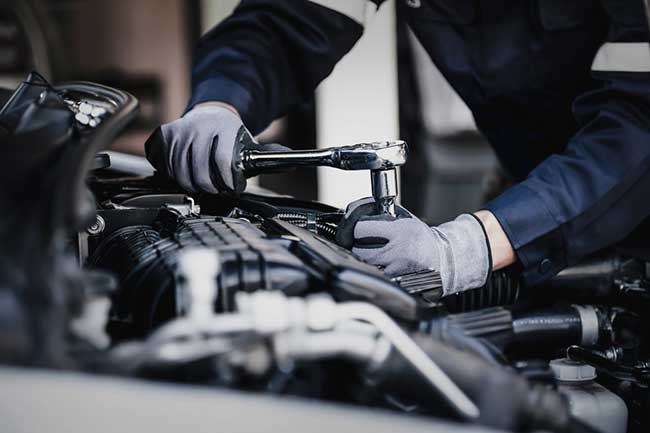All Categories
Featured
Tire turnings could not always be leading of mind for automobile maintenance, yet they play an important duty in guaranteeing your vehicle's efficiency, safety and security, and durability. By on a regular basis revolving your tires, you can stop unequal wear, optimize your tires' lifespan, and improve your driving experience.
What Is Tire Turning?
Tire rotation is the procedure of moving tires to different positions on your lorry to ensure even put on. Depending on your car's drivetrain-- front-wheel drive (FWD), rear-wheel drive (RWD), or four-wheel drive (AWD)-- the front and back tires experience various degrees of stress. Consistently rotating your tires helps disperse this wear equally.
Benefits of Routine Tire Rotations
Even Tire Wear
Tires on different axles experience various levels of tension. Front tires on a FWD car handle velocity, stopping, and guiding, causing them to put on a lot more rapidly.
Revolving the tires makes certain even use, permitting all four tires to preserve similar tread depth.
Improved Handling and Safety
![]()
Uneven step deepness can result in imbalances, decreased grip, and compromised handling, particularly on wet or unsafe roadways.
Rotated tires make certain regular efficiency and a safer driving experience.
Prolonged Tire Life-span
Even wear ways your tires last much longer, saving you money on premature replacements.
Better Fuel Performance
![]()
Erratically used tires can raise moving resistance, calling for even more energy from the engine and lowering gas economy.
Well balanced tires minimize strain on the automobile and improve performance.
Cost Cost Savings
By prolonging the life of your tires and stopping early replacements, routine rotations can save you significant prices with time.
Suggested Rotation Intervals
The majority of producers recommend rotating your tires every 5,000 to 7,500 miles. A great guideline of thumb is to have your tires rotated throughout regular maintenance check outs, such as oil modifications. Always describe your car's owner guidebook for certain standards.
Common Tire Turning Patterns
The rotation pattern depends on your car's drivetrain and tire kind:
Front-Wheel Drive: Swap front tires with the back ones, crossing them diagonally.
Rear-Wheel Drive: Move back tires to the front axle and cross them.
All-Wheel Drive: Make Use Of an "X" pattern for well balanced wear.
Directional Tires: Ensure the tires stay on the same side to preserve their designed efficiency.
Indications You Required a Tire Rotation
Unequal wear patterns on the tires.
Car resonances, particularly at greater rates.
Lowered fuel performance.
Trouble keeping control in negative problems.
Last Ideas
Routine tire rotations are necessary for keeping your car's security and efficiency. By spending time in this straightforward treatment, you'll appreciate a smoother trip, boosted handling, and significant cost savings in the lengthy run. Schedule your next tire rotation with a relied on solution carrier and make it a normal part of your upkeep routine.
What Is Tire Turning?
Tire rotation is the procedure of moving tires to different positions on your lorry to ensure even put on. Depending on your car's drivetrain-- front-wheel drive (FWD), rear-wheel drive (RWD), or four-wheel drive (AWD)-- the front and back tires experience various degrees of stress. Consistently rotating your tires helps disperse this wear equally.
Benefits of Routine Tire Rotations
Even Tire Wear
Tires on different axles experience various levels of tension. Front tires on a FWD car handle velocity, stopping, and guiding, causing them to put on a lot more rapidly.
Revolving the tires makes certain even use, permitting all four tires to preserve similar tread depth.
Improved Handling and Safety

Uneven step deepness can result in imbalances, decreased grip, and compromised handling, particularly on wet or unsafe roadways.
Rotated tires make certain regular efficiency and a safer driving experience.
Prolonged Tire Life-span
Even wear ways your tires last much longer, saving you money on premature replacements.
Better Fuel Performance

Erratically used tires can raise moving resistance, calling for even more energy from the engine and lowering gas economy.
Well balanced tires minimize strain on the automobile and improve performance.
Cost Cost Savings
By prolonging the life of your tires and stopping early replacements, routine rotations can save you significant prices with time.
Suggested Rotation Intervals
The majority of producers recommend rotating your tires every 5,000 to 7,500 miles. A great guideline of thumb is to have your tires rotated throughout regular maintenance check outs, such as oil modifications. Always describe your car's owner guidebook for certain standards.
Common Tire Turning Patterns
The rotation pattern depends on your car's drivetrain and tire kind:
Front-Wheel Drive: Swap front tires with the back ones, crossing them diagonally.
Rear-Wheel Drive: Move back tires to the front axle and cross them.
All-Wheel Drive: Make Use Of an "X" pattern for well balanced wear.
Directional Tires: Ensure the tires stay on the same side to preserve their designed efficiency.
Indications You Required a Tire Rotation
Unequal wear patterns on the tires.
Car resonances, particularly at greater rates.
Lowered fuel performance.
Trouble keeping control in negative problems.
Last Ideas
Routine tire rotations are necessary for keeping your car's security and efficiency. By spending time in this straightforward treatment, you'll appreciate a smoother trip, boosted handling, and significant cost savings in the lengthy run. Schedule your next tire rotation with a relied on solution carrier and make it a normal part of your upkeep routine.
Latest Posts
How Digital Banking Simplifies Your Finances
Published Jan 19, 25
1 min read
Custom Bathroom Solutions by Bath Fitter
Published Jan 19, 25
0 min read
Full Circle Marketing: Transform Your Brand with Proven Strategies
Published Jan 19, 25
1 min read